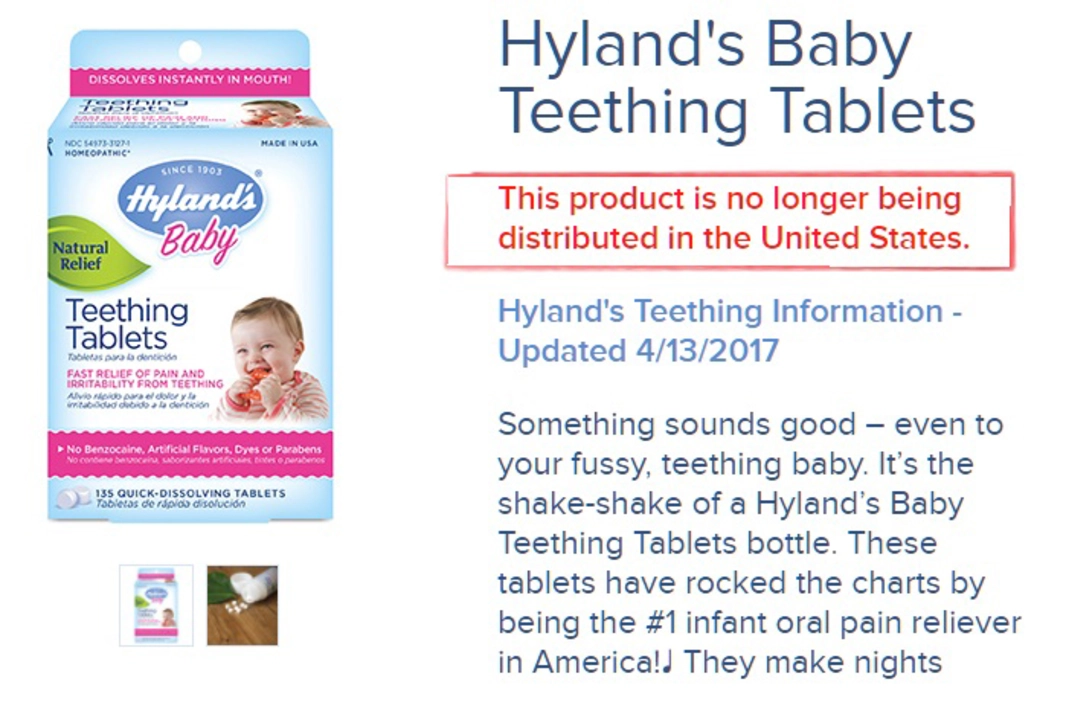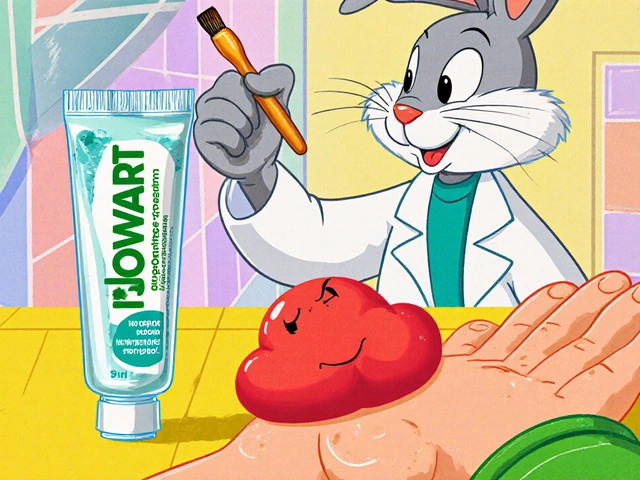
Understanding Teething Pain in Babies
As a parent, it's essential to understand the teething process and how it affects your baby. Teething is a natural stage in a baby's development, usually starting between 4 to 7 months of age. During this time, your baby's first teeth will start to emerge, and this can cause discomfort and pain. In this section, we will discuss the signs of teething and why it's essential to choose the right teething pain relief product for your baby.
Teething can cause several symptoms, including increased drooling, irritability, swollen gums, and difficulty sleeping. It's essential to recognize these signs and provide your baby with the necessary support and pain relief. Choosing the right teething pain relief product can make a significant difference in your baby's comfort and overall well-being during this challenging period.
Safe and Effective Teething Pain Relief Options
There are several safe and effective teething pain relief options available for your baby. It's essential to choose a product that is age-appropriate and has been proven effective in relieving teething pain. In this section, we will discuss various teething pain relief options and their benefits, including teething toys, gels, and over-the-counter medications.
Teething toys are an excellent option as they provide a safe and effective way for your baby to soothe their sore gums. Look for toys made from soft, non-toxic materials and those that can be cooled in the refrigerator for added relief. Teething gels and creams can also provide temporary relief by numbing the gums. However, it's essential to use these products as directed and consult with your pediatrician before using them. Over-the-counter medications such as acetaminophen and ibuprofen can help reduce inflammation and pain, but it's crucial to follow the recommended dosages for your baby's age and weight.
What to Avoid in Teething Pain Relief Products
While there are many safe and effective teething pain relief products available, it's essential to know what to avoid. Some products may pose potential dangers or be ineffective in providing the necessary relief for your baby. In this section, we will discuss the types of products to avoid, including homeopathic remedies, amber teething necklaces, and certain teething toys.
Homeopathic remedies are not regulated by the FDA and may not be safe or effective for your baby. It's best to stick with products that have been proven effective and are recommended by healthcare professionals. Amber teething necklaces have become popular in recent years, but they pose a choking hazard and have not been proven effective in relieving teething pain. When choosing teething toys, avoid those with small parts that could pose a choking hazard or those made from hard materials that could injure your baby's gums.
Consulting with Your Pediatrician
One of the most critical steps in choosing the right teething pain relief product for your baby is consulting with your pediatrician. Your baby's doctor can provide valuable guidance and recommendations based on their knowledge of your baby's overall health and specific needs. In this section, we will discuss the importance of discussing teething pain relief options with your pediatrician and the types of questions you should ask.
Your pediatrician can help you determine which teething pain relief products are safe and appropriate for your baby. They may also recommend specific products or brands that have been proven effective. Some questions you may want to ask your pediatrician include: "What are the most effective teething pain relief options for my baby?" "Are there any products I should avoid?" "What is the recommended dosage for over-the-counter medications?" and "Are there any natural remedies or techniques that can help soothe my baby's teething pain?"
Monitoring Your Baby's Progress and Adjusting as Needed
Once you have chosen a teething pain relief product for your baby, it's essential to monitor their progress and adjust as needed. Every baby is unique, and what works for one may not work for another. In this section, we will discuss how to monitor your baby's teething pain relief progress and make adjustments to ensure they are comfortable and well-cared for during this challenging period.
Pay close attention to your baby's symptoms and behaviors, noting any improvements or worsening of their teething pain. If a particular product does not seem to be providing adequate relief, try another option or consult with your pediatrician for additional recommendations. It's also essential to ensure that your baby is receiving proper nutrition and hydration during the teething process, as this can play a significant role in their overall comfort and well-being. Remember that teething is a temporary phase, and with the right support and pain relief, your baby will soon have a healthy set of teeth to show off!





Julie Gray
May 14, 2023 AT 19:00In the modern marketplace of infant care products, one must remain vigilant of the opaque machinations that govern product endorsement. The pharmaceutical conglomerates, operating under the façade of benevolence, have vested interests in the promotion of teething gels laced with synthetic anesthetics. These entities exploit parental anxiety, directing attention toward chemically potent solutions while marginalizing low‑tech alternatives such as chilled teething toys. Historically, the pattern repeats: corporations introduce a novel pain‑relief formula, secure a foothold through aggressive marketing, and subsequently suppress dissenting clinical data. The same playbook is discernible in the current surge of over‑the‑counter gels, where proprietary blends are touted as safe despite limited longitudinal studies. It is prudent to scrutinize the regulatory filings, many of which are filed under exemptions that escape public scrutiny. Moreover, subsidies from major retailers create a feedback loop that incentivizes the stocking of these questionable products. The resultant effect is a market saturated with items that may obscure more natural, evidence‑based interventions. Parents, therefore, should demand transparency regarding ingredient sourcing and manufacturing processes. Independent pediatric research often highlights the efficacy of cold therapy, yet such findings receive scant coverage compared to vapor‑filled advertising campaigns. One must also consider the sociopolitical dimension: data collection on infant health outcomes is frequently harvested by entities with profit motives, potentially compromising patient confidentiality. In light of these considerations, a cautious approach is warranted when selecting a teething pain‑relief modality. Seek products that have undergone rigorous peer‑reviewed trials and bear endorsements from unbiased medical institutions. Reject those that rely on anecdotal testimonials lacking empirical validation. Finally, maintain an ongoing dialogue with a trusted pediatrician who can provide guidance untainted by corporate influence. By adhering to these principles, caregivers can navigate the commercial labyrinth with a critical eye, ensuring that the chosen solution prioritizes the infant's safety over profiteering agendas.
Lisa Emilie Ness
May 14, 2023 AT 20:00Appreciate the thorough analysis respectfully I prefer to keep recommendations simple and safe
Emily Wagner
May 14, 2023 AT 21:00Whoa this reads like a deep dive into the ontology of pain and the sociocultural scaffolding of baby comfort! Let’s break it down: the baby’s gum is a microcosm of existential distress, and the teething toy is the phenomenological artifact that mediates that angst. A chilled silicone ring isn’t just a toy; it’s a tactile interface that resonates with the infant’s proprioceptive field. Meanwhile, gels introduce a pharmacological semiotic that speaks to the body’s nociceptive pathways. In plain terms: cool toys give a natural, low‑tech hug to the gum, while gels whisper a chemical lullaby. Both have their place in the grand schema of soothing, but the key is balance. Think of it as a dialectic between nature and technology, where the synthesis is a well‑rounded pain‑relief strategy.
Mark French
May 14, 2023 AT 22:00I hear the concerns raised above and I want to acknowledge the valid points made It's essential to consider each baby's unique response and to consult with your pediatrician before introducing any new product Some parents defiantly try products that may cause more harm than good and its understandable how that can happen Together we can share experiences and navigate safely with care
Daylon Knight
May 14, 2023 AT 23:00Oh great another miracle gel, just what the world needed